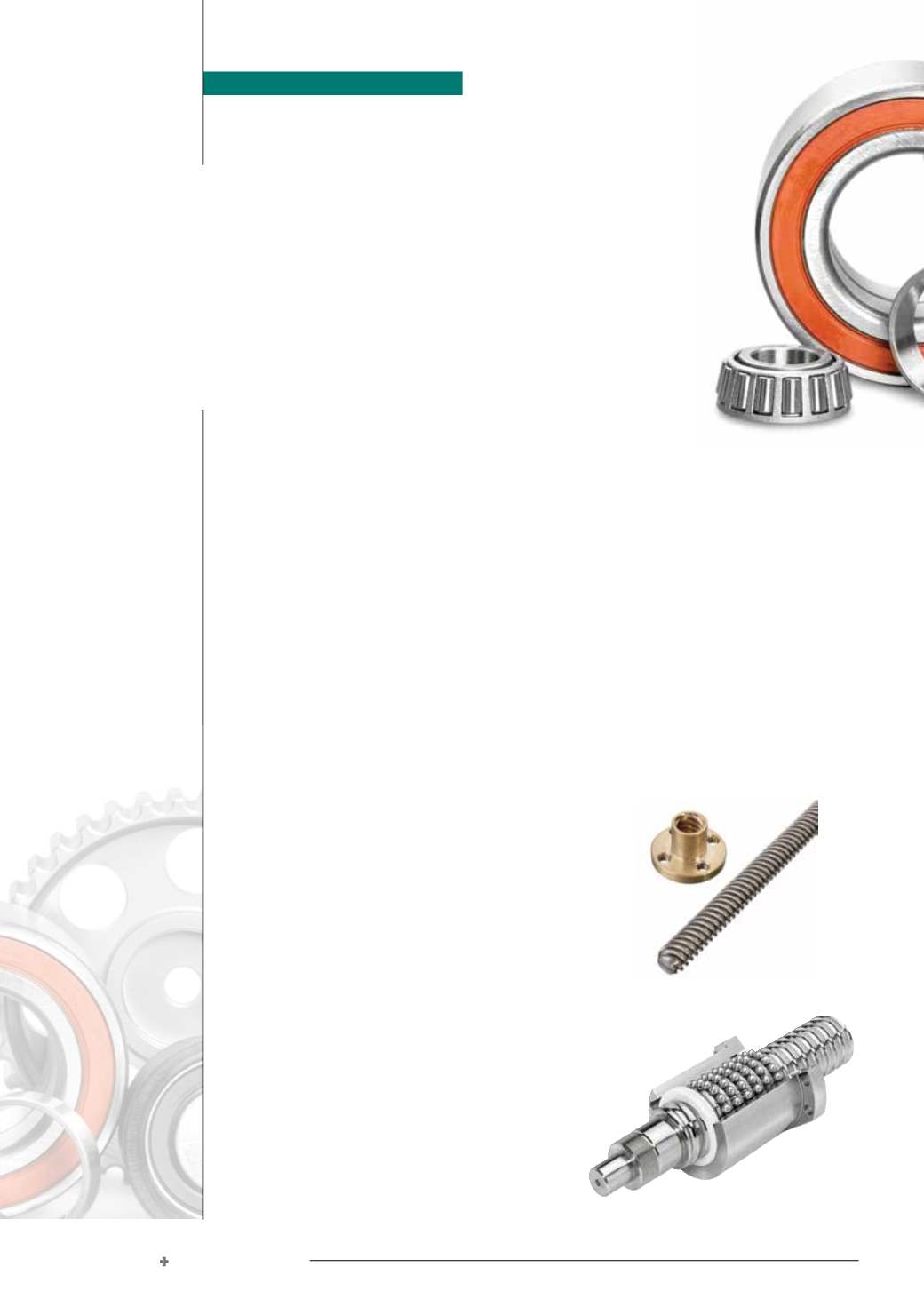

10
Electricity
+
Control
JULY 2017
A
t the forefront of successful designs lies
the correct specification of the mechani-
cal components used. This article concen-
trates on the key interface, the speed reducer
which couples a driving motor to a driven load.
Speed reducer functions
• Match motor top speed to load
• Match motor rotor inertia to load inertia
• Isolate drive from load environment
From this, it will become apparent that reducer se-
lection is not a trivial process.
Reducer types
• Convert motor rotary motion to linear motion.
Many machines such as machine tools and
gantry robots require this type of motion. The
required speed conversion is always part of
the process. Common methods include lead-
screws, rack and pinions, belts and chains
• Drive rotary loads with suitable speed change.
Applications include rotary tables, machine
spindles and robot arms. Apart from gearhead
boxes, motors can drive loads via belts (usually
toothed) or chains
Linear drives
A small number of applications suit the use of
linear motors. The moving carriage interacts with
stationary guideway magnetically. At present, ap-
plications are restricted to high speed low inertia
systems such as pick and place machines.
Leadscrews
These are widely used to convert rotary input to
motion linear displacement.
•
Figure 1
shows a typical leadscrew arrange-
ment. Screws are usually steel (ferrous or
stainless) with nuts made from bronze or
self-lubricating plastics such as Acetal. The
screw thread can be rectangular, but trapezoi-
dal types are more common. Efficiencies are in
the range of 35% to 80% depending on mate-
rial used and lubrication.
•
Figure 2
shows a ballscrew and nut. In this
case the sliding contact between the screw
and the nut is replaced by the rolling action of
the recirculating balls in the nut. Efficiencies
are now in the range of 85% to 95%
Figure 1: Lead screw.
Figure 2: Ball screw.
Applying Speed
Reducers
to
Mechatronic Systems
Glyn Craig, Techlyn
The term mechatronics unites various engineering disciplines such as mechanics,
electrical, electronics and computer engineering.
DRIVES, MOTORS + SWITCHGEAR
















